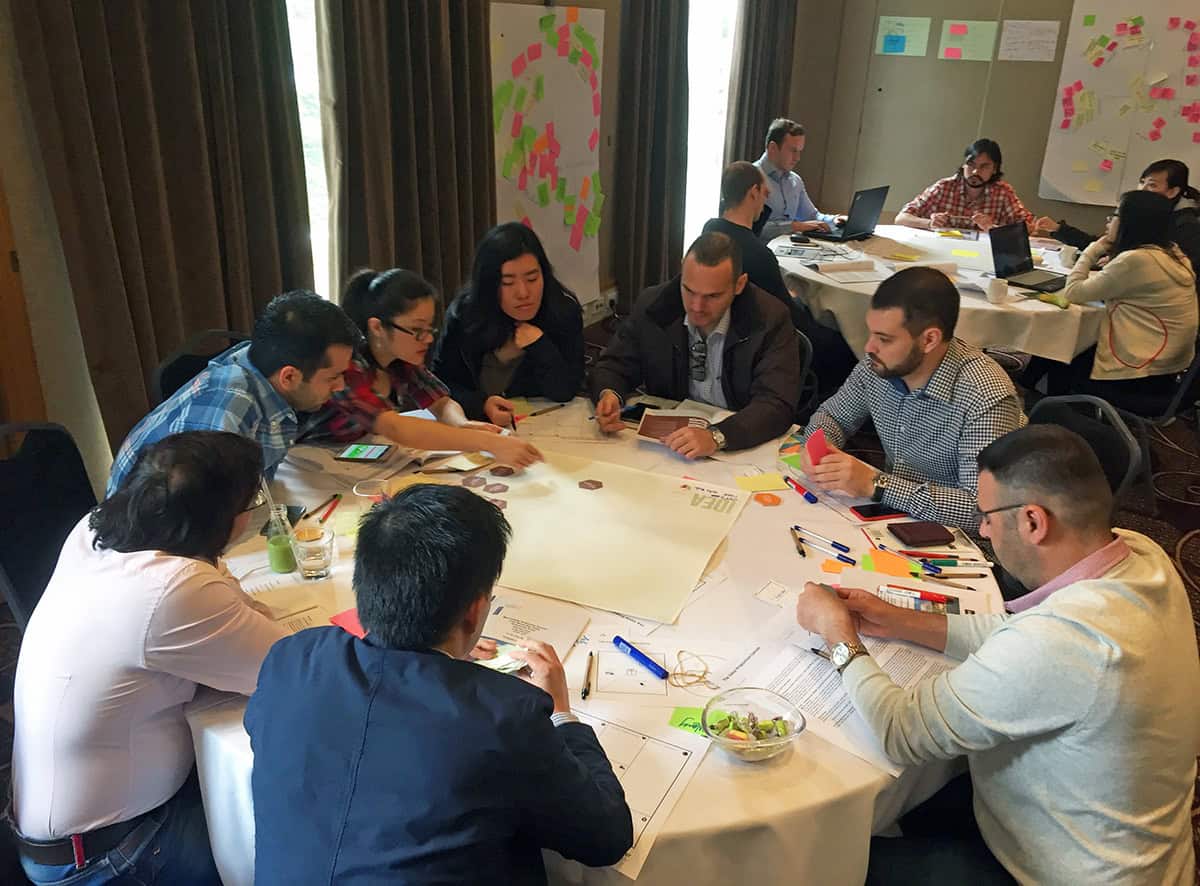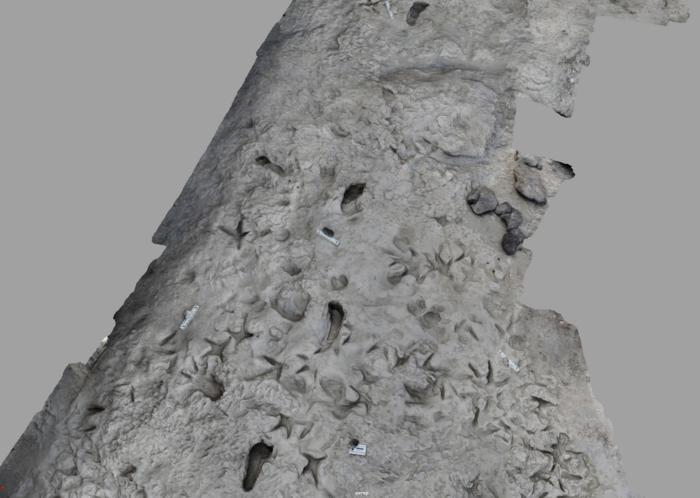String Theory Is Not Dead



The plant kingdom is full of intriguing ways to distribute seeds such as the dandelion pappus effortlessly drifting on air currents to the ballistic nature of fern sporangia.
Not to be outdone, the squirting cucumber (Ecballium elaterium), which is native to the Mediterranean and is often regarded as a weed, has its own unique way of ejecting seeds.
When ripe, the ovoid-shaped fruits detach from the stem and as it does so explosively ejects seeds in a high-pressure jet of mucilage.
The process, which lasts just 30 milliseconds, launches the seeds at more than 20 metres per second with some landing 10 metres away.
Researchers in the UK have, for the first time, revealed the mechanism behind the squirt by carrying out high-speed videography, computed tomography scans and mathematical modelling.
“The first time we inspected this plant in the Botanic Garden, the seed launch was so fast that we weren’t sure it had happened,” recalls Oxford University mathematical biologist Derek Moulton. “It was very exciting to dig in and uncover the mechanism of this unique plant.”
The researchers found that in the weeks leading up to the ejection, fluid builds up inside the fruits so they become pressurised. Then just before seed dispersal, some of this fluid moves from the fruit to the stem, making it longer and stiffer.
This process crucially causes the fruit to rotate from being vertical to close to an angle of 45 degrees, improving the launch angle for the seeds.
During the first milliseconds of ejection, the tip of the stem holding the fruit then recoils away causing the fruit to counter-rotate and detach. As it does so, the pressure inside the fruit causes the seeds to eject at high speed.
By changing certain parameters in the model, such as the stiffness of the stem, reveals that the mechanism has been fine-tuned to ensure optimal seed dispersal. For example, a thicker or stiffer stem would result in the seeds being launched horizontally and distributed over a narrower area.
According to Manchester University physicist Finn Box, the findings could be used for more effective drug delivery systems “where directional release is crucial”.
The post The mechanics of squirting cucumbers revealed appeared first on Physics World.


What does an idea need to change the world? Physics drives scientific advancements in healthcare, green energy, sustainable materials and many other applications. However, to bridge the gap between research and real-world applications, physicists need to be equipped with entrepreneurship skills.
Many students dream of using their knowledge and passion for physics to change the world, but when it comes to developing your own product, it can be hard to know where to start. That’s where my job comes in – I have been teaching scientists and engineers entrepreneurship for more than 20 years.
Several of the world’s most successful companies, including Sony, Texas Instruments, Intel and Tesla Motors, were founded by physicists, and there are many contemporary examples too. For example, Unitary, an AI company that identifies misinformation and deepfakes, was founded by Sasha Haco, who has a PhD in theoretical physics. In materials science, Aruna Zhuma is the co-founder of Global Graphene Group, which manufactures single layers of graphene oxide for use in electronics. Zhuma has nearly 500 patents, the second largest number of any inventor in the field.
In the last decade quantum technology, which encompasses computing, sensing and communications, has spawned hundreds of start-ups, often spun out from university research. This includes cybersecurity firm ID Quantique, super sensitive detectors from Single Quantum, and quantum computing from D-Wave. Overall, about 8–9% of students in the UK start businesses straight after they graduate, with just over half (58%) of these graduate entrepreneurs founding firms in their subject area.
However, even if you aren’t planning to set up your own business, entrepreneurship skills will be important no matter what you do with your degree. If you work in industry you will need to spot trends, understand customers’ needs and contribute to products and services. In universities, promotion often requires candidates to demonstrate “knowledge transfer”, which means working with partners outside academia.
The first step of kick-starting your entrepreneurship journey is to evaluate your existing experience and goals. Do you already have an idea that you want to take forward, or just want to develop skills that will broaden you career options?
If you’re exploring the possibilities of entrepreneurship you should look for curricular modules at your university. These are normally tailored to those with no previous experience and cover topics such as opportunity spotting, market research, basic finance, team building and intellectual property. In addition, in the UK at least, many postgraduate centres for doctoral training (CDTs) now offer modules in business and entrepreneurship as part of their training programmes. These courses sometimes give students the opportunity to take part in live company projects, which are a great way to gain skills.
You should also look out for extracurricular opportunities, from speaker events and workshops to more intensive bootcamps, competitions and start-up weekends. There is no mark or grade for these events, so they allow students to take risks and experiment.
Like any kind of research, commercializing physics requires resources such as equipment and laboratory space. For early-stage founders, access to business incubators – organizations that provide shared facilities – is invaluable. You would use an incubator at a relatively early stage to finalize your product, and they can be found in many universities.
Accelerator programmes, which aim to fast-track your idea once you have a product ready and usually run for a defined length of time, can also be beneficial. For example, the University of Southampton has the Future Worlds Programme based in the physical sciences faculty. Outside academia, the European Space Agency has incubators for space technology ideas at locations throughout Europe, and the Institute of Physics also has workspace and an accelerator programme for recently graduated physicists and especially welcomes quantum technology businesses. The Science and Technology Facilities Council (STFC) CERN Business Incubation Centre focuses on high-energy physics ideas and grants access to equipment that would be otherwise unaffordable for a new start-up.
More accelerator programmes supporting physics ideas include Duality, which is a Chicago-based 12-month accelerator programme for quantum ideas; Quantum Delta NL, based in the Netherlands, which provides programmes and shared facilities for quantum research; and Techstars Industries of the Future, which has locations worldwide.
It’s the multimillion-pound deals that make headlines but to get to that stage you will need to gain investors’ confidence, securing smaller funds to take your idea forward step-by-step. This could be used to protect your intellectual property with a patent, make a prototype or road test your technology.
Since early-stage businesses are high risk, this money is likely to come from grants and awards, with commercial investors such as venture capital or banks holding back until they see the idea can succeed. Funding can come from government agencies like the STFC in the UK, or US government scheme America’s Seed Fund. These grants are for encouraging innovation, applied research and for finding disruptive new technology, and no return is expected. Early-stage commercial funding might come from organizations such as Seedcamp, and some accelerator programmes offer funding, or at least organize a “demo day” on completion where you can showcase your venture to potential investors.

While you’re a student, you can take advantage of the venture competitions that run at many universities, where students pitch an idea to a panel of judges. The prizes can be significant, ranging from £10k to £100k, and often come with extra support such as lab space, mentoring and help filing patents. Some of these programmes are physics-specific, for example the Eli and Britt Harari Enterprise Award at the University of Manchester, which is sponsored by physics graduate Eli Harari (founder of SanDisc) awards funding for graphene-related ideas.
Finally, remember that physics innovations don’t always happen in the lab. Theoretical physicist Stephen Wolfram founded Wolfram Research in 1988, which makes computational technology including the answer engine Wolfram Alpha.
There are many examples of students and recent graduates making a success from entrepreneurship. Wai Lau is a Manchester physics graduate who also has a master’s of enterprise degree. He started a business focused on digital energy management, identifying energy waste, while learning about entrepreneurship. His business Cloud Enterprise has now branched out to a wider range of digital products and services.
Computational physics graduate Gregory Mead at Imperial College London started Musicmetric, which uses complex data analytics to keep track of and rank music artists and is used by music labels and artists. He was able to get funding from Imperial Innovations after making a prototype and Musicmetric was eventually bought by Apple.
AssestCool Thermal Metaphotonics technology cools overhead power lines reducing power losses using novel coatings. It entered the Venture Further competition at the University of Manchester and has now had a £2.25m investment from Gritstone Capital.
Entrepreneurship skills are being increasingly recognized as necessary for physics graduates. In the UK, the IOP Degree Accreditation Framework, the standard for physics degrees, expects students to have “business awareness, intellectual property, digital media and entrepreneurship skills”.
Thinking about taking the leap into business can be daunting, but university is the ideal time to think about entrepreneurship. You have nothing to lose and plenty of support available.
The post From the blackboard to the boardroom: why university is a great place to become an entrepreneur appeared first on Physics World.




Climate science and astronomy have much in common, and this has inspired the astrophysicist Travis Rector to call on astronomers to educate themselves, their students and the wider public about climate change. In this episode of the Physics World Weekly podcast, Rector explains why astronomers should listen to the concerns of the public when engaging about the science of global warming. And, he says the positive outlook of some of his students at the University of Alaska Anchorage makes him believe that a climate solution is possible.
Rector says that some astronomers are reluctant to talk to the public about climate change because they have not mastered the intricacies of the science. Indeed, one aspect of atmospheric physics that has challenged scientists is the role that clouds play in global warming. My second guest this week is the science journalist Michael Allen, who has written a feature article for Physics World called “Cloudy with a chance of warming: how physicists are studying the dynamical impact of clouds on climate change”. He talks about climate feedback mechanisms that involve clouds and how aerosols affect clouds and the climate.
The post Astronomers can play an important role in explaining the causes and consequences of climate change, says astrophysicist appeared first on Physics World.


A new algorithmic technique could enhance the output of fusion reactors by smoothing out the laser pulses used to compress hydrogen to fusion densities. Developed by physicists at the University of Bordeaux, France, a simulated version of the new technique has already been applied to conditions at the US National Ignition Facility (NIF) and could also prove useful at other laser fusion experiments.
A major challenge in fusion energy is keeping the fuel – a mixture of the hydrogen isotopes deuterium and tritium – hot and dense enough for fusion reactions to occur. The two main approaches to doing this confine the fuel with strong magnetic fields or intense laser light and are known respectively as magnetic confinement fusion and inertial confinement fusion (ICF). In either case, when the pressure and temperature become high enough, the hydrogen nuclei fuse into helium. Since the energy released in this fusion reaction is, in principle, greater than the energy needed to get it going, fusion has long been viewed as a promising future energy source.
In 2022, scientists at NIF became the first to demonstrate “energy gain” from fusion, meaning that the fusion reactions produced more energy than was delivered to the fuel target via the facility’s system of super-intense lasers. The method they used was somewhat indirect. Instead of compressing the fuel itself, NIF’s lasers heated a gold container known as a hohlraum with the fuel capsule inside. The appeal of this so-called indirect-drive ICF is that it is less sensitive to inhomogeneities in the laser’s illumination. These inhomogeneities arise from interactions between the laser beams and the highly compressed plasma produced during fusion, and they are hard to get rid of.
In principle, though, direct-drive ICF is a stronger candidate for a fusion reactor, explains Duncan Barlow, a postdoctoral researcher at Bordeaux who led the latest research effort. This is because it couples more energy into the target, meaning it can deliver more fusion energy per unit of laser energy.
To work out which laser configurations are the most homogeneous, researchers typically use iterative radiation-hydrodynamic simulations. These are time-consuming and computationally expensive (requiring around 1 million CPU hours per evaluation). “This expense means that only a few evaluations were run, and each step was best performed by an expert who could use her or his experience and the data obtained to pick the next configurations of beams to test the illumination uniformity,” Barlow says.
The new approach, he explains, relies on approximating some of the laser beam-plasma interactions by considering isotropic plasma profiles. This means that each iteration uses less than 1000 CPU, so thousands can be run for the cost of a single simulation using the old method. Barlow and his colleagues also created an automated method to quantify improvements and select the most promising step forward for the process.
The researchers demonstrated their technique using simulations of a spherical target at NIF. These simulations showed that the optimized configuration should produce convergent shocks in the fuel target, resulting in pressures three times higher (and densities almost two times higher) than in the original experiment. Although their simulations focused on NIF, they say it could also apply to other pellet geometries and other facilities.
The study builds on work by Barlow’s supervisor, Arnaud Colaïtis, who developed a tool for simulating laser-plasma interactions that incorporates a phenomenon known as cross-beam energy transfer (CBET) that contributes to inhomogeneities. Even with this and other such tools, however, Barlow explains that fusion scientists have long struggled to define optical illuminations when the system deviates from a simple mathematical description. “My supervisor recognized the need for a new solution, but it took us a year of further development to identify such a methodology,” he says. “Initially, we were hoping to apply neural networks – similar to image recognition – to speed up the technique, but we realized that this required prohibitively large training data.”
As well as working on this project, Barlow is also involved in a French project called Taranis that aims to use ICF to produce energy – an approach known as inertial fusion energy (IFE). “I am applying the methodology from my ICF work in a new way to ensure the robust, uniform drive of targets with the aim of creating a new IFE facility and eventually a power plant,” he tells Physics World.
A broader physics application, he adds, would be to incorporate more laser-plasma instabilities beyond CBET that are non-linear and normally too expensive to model accurately with radiation-hydrodynamic simulations. Some examples include simulated Brillouin scattering, stimulated Raman scattering and two-plasmon decay. “The method presented in our work, which is detailed in Physical Review Letters, is a great accelerated scheme for better evaluating these laser-plasma instabilities, their impact for illumination configurations and post-shot analysis,” he says.
The post Optimization algorithm gives laser fusion a boost appeared first on Physics World.


